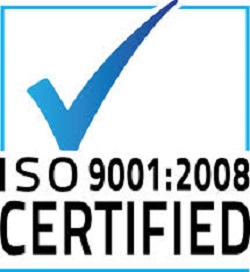


If a company has an inventory turnover ratio of 2 to 1, it means that the company’s inventory turned over twice in the reporting period.
Operating Margin = Income from Operations / Net Revenues Operating margin is usually expressed as a percentage. It shows, for each dollar of sales, what percentage was profit.
P/E Ratio = Price per share / Earnings per share If a company’s stock is selling at $20 per share and the company is earning $2 per share, then the company’s P/E Ratio is 10 to 1. The company’s stock is selling at 10 times its earnings.
Working Capital = Current Assets – Current Liabilities
Saving and Investing
Define Your GoalsTo end up where you want to be, you’ll need a roadmap, a financial plan. To get started on your plan, you’ll need to ask yourself what are the things you want to save and invest for. Here are some possibilities:
Make your own list and then think about which goals are the most important to you. List your most important goals first.
|
| ||||||||||||||||||||||||||||||||||||||||||||||||||||||||||||||||||||||||||||||||||||||||||||||
USA - Asia - Russia - India - EU - West Indies - China - Indonesia - Latin America - Arabia - Africa
Best Online University - Online Nursing Degrees Home Home About Requirements Recognition Certifications Register News Benefits Mission Board Course Certifications Apply Training Providers CEO Message Accreditations Application Handbook Be a Training Provider Renew Certification Continuing Ed Speakers Ethics Sample Indonesia Contact Us Contact Online Certification Convert Courses To Certification CFM Chartered Financial Manager Global Advisors FINTECH CHFM CHARTERED FINANCIAL MANAGER Reg. Payments IP Home George Mentz Colorado Springs CEO GAFM - Global Academy of Finance & Management Training Calendar Chartered Wealth Manager Training Membership CCO Higher Institute IP List Management Consulting Jobs Project Management Certifications CWM Chartered Wealth Manager Terms AFA Approved Masters Degrees Economics Certification Economics Degrees Management Degrees Finance Degrees Accounting Degrees Careers Reference to FINRA Certification Guide & Standards FINRA EDUCATION CWM Chartered Wealth Manager ® Chartered Financial Manager ® AFA Accredited Certified Financial Analyst ® AMA Accredited Certified Management Accountant ® CAM Chartered Asset Manager CTEP Chartered Trust and Estate Planner ® RFS Registered Financial Specialist CMA Chartered Market Analyst FAD Financial Analyst Designate CPM Chartered Portfolio Manager - IACSB * Chartered Financial Manager FINRA * Certified Risk Analyst FINRA * MFP Master Financial Planner ® - Aspen Commission
All Rights Reserved 1996-2025 - GAFM Global Academy of Finance and Management &
Association for Finance and Management
Mentzinger Media LLC Board of
Standards - Accreditation and Certification - Global Certified
Accountants Financial Analysts Institute
Association of International Financial Accounting Foregin Relations
Public Policy Council Chartered
Wealth Manager
Accredited Financial Analyst Certified Chartered Management
Accountant - Association Institute Academy
US Department of
Labor - George Mentz -
George Mentz Trump -
Commissioner George Mentz
Join us on
LinkedIn - Financial Analyst
Training - Chartered
Wealth Manager ® - ChE
Chartered Economist ® - IACSB - CHEQS
Certified Financial Analyst * Management
Consultant Certification * Certified Project Manager *
Chartered Wealth
Manager
In alliance with the Unincorported Non-Profit Association of Finance and
Management USA
Legal Notice: The GAFM International Board of Standards and Academy have existing mutual trademarks agreements with the CFP Certified Financial Planner Board, The IMA Institute of Management Accountants, and the CFA Chartered Financial Analyst Institute formerly known as the AIMR association.
A financial analyst securities analyst, research analyst, equity
analyst, or investment analyst is a person who performs financial analysis for external or internal clients
as a core part of the job. Financial analysis (also referred to as financial statement analysis or
accounting analysis or Analysis of finance) refers to an assessment of the viability, stability and
profitability of a business, sub-business or project. It is performed by professionals who prepare reports
using ratios that make use of information taken from financial statements and other reports. These reports
are usually presented to top management as one of their bases in making business decisions. Certification
as a financial analyst requires accredited education in finance
Management consulting is the practice of helping organizations to improve
their performance, primarily through the analysis of existing organizational problems and development of
plans for improvement. Organizations may draw upon the services of management consultants for a number of
reasons, including gaining external (and presumably objective) advice and access to the consultants'
specialized expertise. Becoming certified in management consulting requires proper education experience and
credentials.
Management accounting or managerial accounting is concerned with the
provisions and use of accounting information to managers within organizations, to provide them with the
basis to make informed business decisions that will allow them to be better equipped in their management
and control functions. Cost accounting is a process of collecting, analyzing, summarizing and evaluating
various alternative courses of action. Its goal is to advise the management on the most appropriate course
of action based on the cost efficiency and capability. Cost accounting provides the detailed cost
information that management needs to control current operations and plan for the future. Certification in
management or cost accounting requires education and expertise in accounting.
Accreditation Bodies: www.GAFM.com *
www.GAFM.org * www.CertifiedProjectManager.eu * www.AAFM.org * www.CertifiedProjectManager.org *
www.icecc.com * www.RoyalLawSociety.com * www.RoyalBusinessSociety.com * www.RoyalBusinessCollege.com * www.RoyalFellows.com * www.RoyalEconomicsAcademy.com * www.OxfordLawSchool.com * www.RoyalManagementSociety.com *
CWM Chartered Wealth Manager ® AFA Accredited Financial Analyst ® AMA Accredited Management Accountant ® CAM Chartered Asset Manager CTEP Chartered Trust and Estate Planner ® RFS Registered Financial Specialist CMA Chartered Market AnalystFAD Financial Analyst Designate CPM Chartered Portfolio Manager MFP Master Financial Planner ® | |||||||||||||||||||||||||||||||||||||||||||||||||||||||||||||||||||||||||||||||||||||||||||||||










